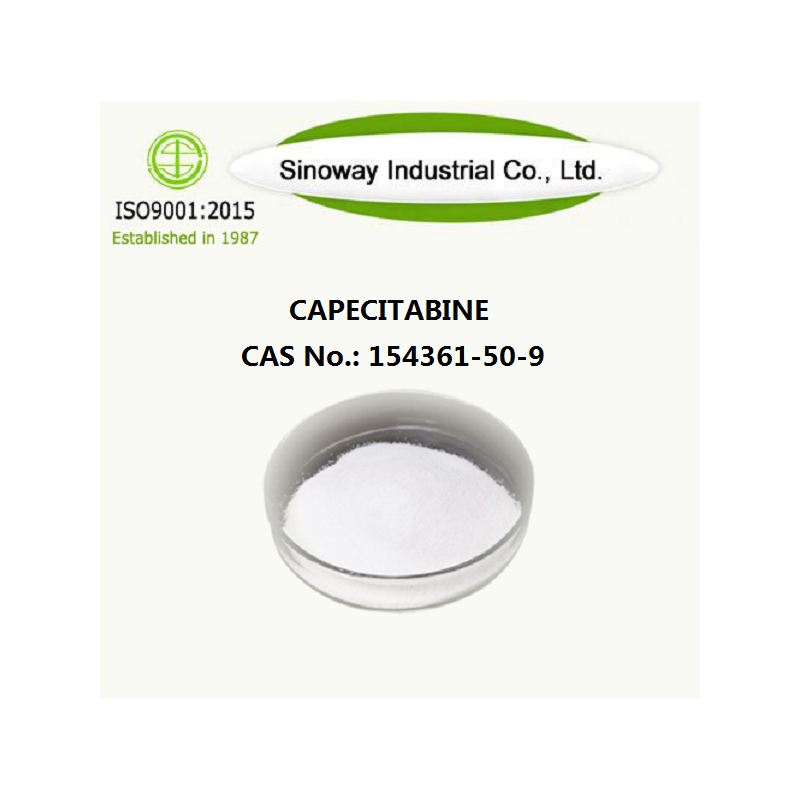|
Product Information |
|
Product name |
Capecitabine |
|
Molecular Formula |
C15H22FN3O6 |
|
Molecular Weight |
359.35 |
|
CAS No. |
154361-50-9 |
|
Quality Standard |
USP34, medical grade |
|
Appearance |
White powder |
|
COA of CAPECITABINE |
|
Items |
Specifications |
Results |
|
Apperance |
White or off-white crystalline powder |
White crystalline powder |
|
Identification |
The spectrum of the sample corresponds to that of RS |
Meets the requirements |
|
The retention time of the major peak of the test solution corresponds to that of the RS |
Meets the requirements |
|
|
Specific Rotation |
+96.0°~+100.0° |
+98.1° |
|
Water |
≤0.3% |
0.01% |
|
Heavy Metals |
≤20ppm |
<20ppm |
|
(as Pb) |
||
|
Residue on ignition |
≤0.1% |
0.02% |
|
Assay |
98.0%~102.0% |
99.70% |
|
Usage |
Function of Capecitabine
Capecitabine is rapidly absorbed through the intestinal mucosa after oral administration, and then converted into an inactive intermediate 5'-deoxy-5'fluorocytidine in the liver by carboxylesterase, and then decellularized by the liver and tumor The action of ammonia enzyme is converted into 5'-deoxy-5 'fluorouridine, and finally catalyzed by thymidine phosphorylase into fluorouracil (5-FU) in tumor tissue.
Clinical studies have shown that the concentration of 5-FU in tumor tissue after oral administration of this product is significantly higher than blood and muscle levels. The curative effect on various animal tumors is significantly higher than that of 5-FU. This product has a synergistic effect with a variety of anti-tumor drugs.



 Gold supplier
Gold supplier









 Facebook
Facebook  Twitter
Twitter  Linkedin
Linkedin  YouTube
YouTube  Blogger
Blogger  Instagram
Instagram 
















